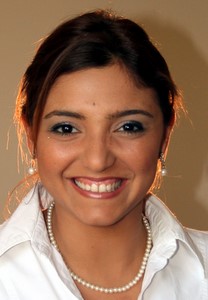 The Development of China’s OER – Chinese Course of Excellence Project and Case Study
The Development of China’s OER – Chinese Course of Excellence Project and Case Study
Talk by Jia Yimin (lecturer) – Future Education Research Center, South China Normal University
Mentor at OLnet: Dr Elpida Makriyannis
Live blogging, 2pm
Jia Yimin came to visit the OLnet project as a fellow in the open educational resources program.

Yimin Jia
The focus of OER in China was initially to build resources, and then to sharing, using and on sustainability. Most OER research is into exploring the economical, legal and social systems for sustainable use of OER. Since 2000 higher education in China changed from a focus on the elite to mass education. For the past 10 years the Ministry of Education has launched a series of projects to control quality on HE, and the National Courses of Excellence project (which is based on OER) is one of them.
OER in China have synergies with the international OER movement – it started with focus on developing resources (11139 National Courses of Excellence open to all universities in China from 2003-2006) and moved to a focus on sustainable development and use (although new resources are still being developed).
The 5 components of Chinese ‘open’ higher education are:
- Open Standards and licences
- Open Source software
- Open Course Management System
- Open Access Content
- Open Sharing Consortium
The main OER initiatives in China’s higher education are:
- The “National Course of Excellence” Project – funded by the Ministry of Education
- Translations and collaborations around foreign OER, as for example, CORE (China Open Resources for Education:non-governmental organisation funded by foundations). It is a consortium of 100 Chinese universities and 44 provincial radio and TV universities – the focus is on translation and collaboration around foreign OER. It also aims to translate the courses developed by the National Consortium of Excellence.
Efforts to improve teaching quality and innovation in Chinese institutions are in 3 fronts: National, Provincial and University levels. To date there are 3,910 National Courses of Excellence, 6,000 Provincial courses and over 10,000 University Courses of Excellence.
Courses of excellence are defined by the policy of the Ministry of education as courses that: “exemplify the characteristics of first-class teaching team, first-class teaching content, first-class teaching methodology, first-class course materials, and first-class teaching management”.
The national courses are selected in the following way: University level courses are proposed, approved and recommended by the Provincial level, then eligibility is checked and finally the Ministry of Education select the courses to be funded (which therefore become a National Course of Excellence). These courses need to be 100% online and offered as an OER to all universities in China.
Challenges: after award of ‘national course of excellence’, some universities do not update them; low use and reuse rate, lack of follow-up funding, intellectual property rights issues.
Usage: 75% of students use the resources as reference material; and 77.2% of teachers use them as teaching resources.
Benefits: teachers learn from other courses ‘how to teach’.
The courses are distributed in the websites of all universities. The problem is that people find it difficult to find the courses. However, at http://www.jingpinke.com most resources are collected (this website is a research project funded by the government).
Question: What are the motivations for universities to apply for National Course of Excellence status?
Answer: It is the ‘honour’ aspect of it – both for the professionals/lecturers and for the universities. It helps them to progress in their career. It is about the status it provides, and also the funding they get from the Ministry of education to help maintain the course. The money can be used by teaching team to update the course.
Question: What is the platform that courses are made available as a National Course of Excellence? How does interoperability work?
Answer: Some universities use their own platform, some others use commercial services – companies which transfer teaching materials into a platform. Some universities use Moodle, Blackboard, etc. Interoperability of systems do not seem to be a concern at this moment.
Question: How are the courses eligible for the National Course of Excellence standard developed? Are they developed through collaboration within a group of universities or developed by a particular university?
Answer: The courses are developed collaboratively by the teaching team of individual universities (constituted of experienced lecturers and young lecturers). The teaching method used is an important theme, because another aim of the government is to improve the quality of teaching in HE – lecturers can learn from one another.
Filed under: OLnet - Open Learning Network, Open Educational Resources | 1 Comment »







